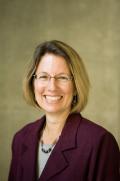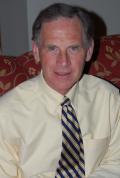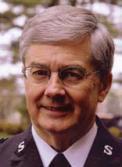2010 Wesleyan Heritage Conference
“WOMEN OF THE WESLEYAN TRADITION” — October 4-6, 2010

The contribution and involvement of women in the growth and vitality of the Wesleyan tradition can be traced to the earliest beginnings of the movement. Women were a part of the Methodism movement from the very beginning, with perhaps the foremost “leader” and person of influence being John Wesley’s own mother – Susannah. At a time and place where it was not popular to do so, women were encouraged to share their experiences at Methodist meetings, then as the movement grew into other Wesleyan holiness denominations, during conversion efforts in private homes, and finally at outdoor “revivals.” Wesley stated his opinion about the usefulness and effectiveness of female co-laborers when he stated,
“May not women as well as men, bear a part in this honorable service? Undoubtedly they may; nay, they ought; it is meet, right and their bounden duty. Herein there is no difference, ‘there is neither male nor female in Christ Jesus.'” – John Wesley
To be sure, not all of Wesley’s followers were pleased with his effort to include women. Some accused Wesley of keeping women so busy that they were neglecting their families. Some accused the overt presence of women in the work of the movement as contributing to the accusation of too much “enthusiasm” or “excess emotion” from critics outside Methodism.
Through the years, the fruitful labor of women in the Wesleyan movement has far exceeded the traditional stereotype of pastor’s wife and Sunday school teacher. Their involvement in communicating the gospel, foreign missions, and social reform movements, has been significant. The history of the Wesleyan movement cannot be written without taking account of its representative women, especially those of the late nineteenth century holiness movement, who are highlighted in this year’s Wesleyan Heritage Conference.
Schedule of Events:
Monday, October 4
10 a.m. — Chapel
Speaker: Dr. Priscilla Pope-Levison (Seattle Pacific University)
Presentation Title: “Turn the Pulpit Loose: A Century and a Half of Wesleyan Women Evangelists”
Location: Hughes Auditorium
Noon — Chapel Talk-Back Lunch
Location: Dougherty Dining Room, Johnson Cafeteria
4 p.m. — Forum (refreshments provided)
Speaker: Dr. Priscilla Pope-Levison
Presentation Title: “African American Women Evangelists and Interracial Cooperation”
Location: Bennett-Bernard Auditorium
Tuesday, October 5
11:30 a.m. — Faculty Development Luncheon (by invitation only)
Speaker: Dr. Charles White (Spring Arbor University)
Presentation Title: “How a Dumpy Middle-Aged Woman Shaped the Thinking of 100 Million Christians”
Location: Gray Room, Johnson Cafeteria
3:30 p.m. — Coffee House (refreshments provided)
Speaker: Dr. Charles White
Presentation Title: “Welcome to Phoebe’s House: What Happens in the Parlor Spreads Throughout the World”
Location: Student Center
Wednesday, October 6
10 a.m. — Chapel
Dr. Roger Green (Gordon College)
Presentation Title: “Catherine Booth and the Drama of the Sanctified Life”
Noon — Chapel Talk-Back Lunch
Location: Dougherty Dining Room, Johnson Cafeteria
6 p.m. — Banquet (by invitation only)
Speaker: Dr. Roger Green
Presentation Title: “Catherine Booth and the Message of Holiness”
Location: Gray Room, Johnson Cafeteria
Speaker Bios:
Dr. Priscilla Pope-Levison

Priscilla Pope-Levison holds a faculty appointment as Professor of Theology and Assistant Director of Women’s Studies at Seattle Pacific University. In addition, she is an Affiliate Faculty in Women Studies at the University of Washington. Previously she was on the faculty at The Divinity School, Duke University, where she taught courses in evangelism and church ministry. In recognition of her teaching effectiveness, she was recently included in a Wabash Center study of Fifty Effective Teachers of the Introductory Course in Religion and Theology. She received her Ph.D. from the University of St. Andrews in Scotland, M.Div. from Duke Divinity School, and B.Mus. from DePauw University.
The archival research for her most recent book, Turn the Pulpit Loose: Two Centuries of American Women Evangelists (Palgrave Macmillan, 2004), was supported by grants from the Lilly Foundation, the American Academy of Religion, the Louisville Institute, and Seattle Pacific University. She has also authored, Evangelization from a Liberation Perspective, and co-authored with John R. Levison, Jesus in Global Contexts and Return to Babel: Global Perspectives on the Bible. Her articles have appeared in these academic and ecclesial journals: International Review of Mission, Missiology, Mid-Stream, Methodist History, Catalyst, Prism, Journal of the Academy for Evangelism in Theological Education, Journal for Preachers, and Lectionary Homiletics. Her essay, “A ‘Thirty Year War’ and More: Exposing Complexities in the Methodist Deaconess Movement,” was awarded the 2008 Women’s History Research Writing Award, sponsored by the General Commission of History and Archives of the United Methodist Church. She has also contributed to several reference works, including Westminster Dictionary of Women and Religion in America, Encyclopedia of Women and Religion in North America, Global Dictionary of Theology, and Historical Dictionary of the Holiness Movement.
She is an ordained United Methodist minister and has served as a local church pastor and as a college chaplain. She and her spouse, Jack Levison, have two children – Chloe, 18, and Jeremy, 14. Any free time will find her spinning yarn, knitting, gardening, or gazing out the window at the Puget Sound and the Olympic Mountain range.
Dr. Charles White

Charles “Chuck” White is professor of Christian Thought and History at Spring Arbor University. He received his academic training at Harvard, Gordon-Conwell, Cambridge, and Boston University School of Theology. He has taught in the United States, Canada, Mexico, England, Australia, the Philippines, India, Iraq, and Nigeria.
Dr. White is an exegetical consultant for Bible translation. His biographical and intellectual study of Phoebe Palmer (The Beauty of Holiness: Phoebe Palmer as Theologian, Revivalist, Feminist and Humanitarian) was published in 1986 by Francis Asbury Press. This title has recently been reprinted by Wipf and Stock. According to the flyleaf, this volume prompts readers “to reassess the role of women in the formative phase of Evangelicalism” and challenges the modern church “to reexamine its appreciation of the leadership that has been provided by gifted women.” His book remains the single most helpful survey of the contribution of Phoebe Palmer to the Holiness movement and to Christian thought in the nineteenth century. He and his wife have four grown children and three grandsons. Chuck runs regularly with five prayer-partners and has set age-group records for slowness.
Dr. Roger J. Green

Roger J. Green is a Salvationist, born to Salvation Army officer parents in Boston, Massachusetts. He is Professor and Chair of Biblical Studies and Christian Ministries at Gordon College in Wenham, Massachusetts. He also holds the Terrelle B. Crum Chair of Humanities. Dr. Green received his B.A. from Temple University in Philadelphia, his M.Div. from Asbury Theological Seminary, his M.Th. from Princeton Theological Seminary, and his Ph.D. from Boston College. He was awarded the D.D. (honorary) from William and Catherine Booth College in Winnipeg, Canada.
Much of his scholarship has been devoted to the history and theology of The Salvation Army. He has written articles in several journals. His books include War on Two Fronts: The Redemptive Theology of William Booth, Catherine Booth: a Biography of the Co-Founder of The Salvation Army, and The Life and Ministry of William Booth, Founder of The Salvation Army. He is a co-editor of Word & Deed: A Journal of Salvation Army Theology and Ministry.
Dr. Green was a member of the Army’s International Spiritual Life Commission and was the first layperson appointed to the International Doctrine Council. He travels internationally for The Salvation Army, preaching and lecturing at various conferences and retreats.
He and his wife, Karen, a retired nurse, live in Danvers, Massachusetts.
“Women of the Wesleyan Tradition” Biographies:
(biographies excerpted from William Kostlevy’s Historical Dictionary of the Holiness Movement)
Amanda Berry Smith

Amanda Berry Smith (1837-1915) was an African Methodist Episcopal (AME) evangelist, singer, and missionary. A former slave and laundress, Smith was converted in 1856 and experienced entire sanctification in 1868 under the ministry of John S. Inskip. She was an active participant in the Palmer’s Tuesday Meeting. In spite of the fact that her emphasis on entire sanctification was controversial in the AME church, Smith’s beautiful singing voice and simple but forceful preaching made her one of the nation’s primary 19th-century camp meeting preachers. In 1875, she joined the Women’s Christian Temperance Union (WTCU) and remained an important leader in the temperance movement for the rest of her life.
In 1878, she was invited to Great Britain, where she spoke at the Keswick Convention and at a series of WCTU-sponsored meetings in England and Scotland. She served as missionary to India (1878-1881) and Liberia (1882-1889).
In India, although creating controversy because of her gender, race, and holiness emphasis, Smith attracted considerable attention and numerous converts, especially among indigenous Indians. In Africa, although she did find considerable satisfaction in her work with William Taylor, she was frustrated by native customs and the lack of interest in temperance.
Returning to North America in 1890, Smith resumed her career as a camp meeting preacher and evangelist. With the exception of an extended speaking tour of England (1983-1894), she remained in North America. In 1895, she began raising funds for an orphanage for African American children. In 1899, she opened the Amanda Smith Orphan Home and Industrial School in Harvey, Illinois. She operated the home until ill health forced her to retire in 1912. Her retirement was spent in Sebring, Florida, at the holiness retirement community that had recently been established by Ohio businessman George Sebring, who had experienced entire sanctification under Smith’s preaching. She was the author of Autobiography: The Story of the Lord’s Dealings with Mrs. Amanda Smith, the Colored Evangelist (1893.)
Catherine Mumford Booth

Catherine Mumford Booth (1829-1890) was a preacher, social reformer, and cofounder of the Salvation Army. Raised in a devoutly religious Methodist family, Mumford became an avid student of theology while she was a bedridden adolescent. About the time her family moved to London in 1844, she experienced entire sanctification. She became active in a Wesleyan Methodist congregation in Brixton but was expelled from the church because of her involvement with a group seeking to reform the church. Among the group was preacher William Booth, whom Mumford married in 1855.
In 1859, Catherine Booth wrote a pamphlet entitled “Female Ministry” in which she presented the case for women taking an active role in the public ministry of the church. The following year, she began to preach. She was instrumental in William Booth’s 1861 decision to abandon the Methodist Church in favor of a career as an itinerant evangelist that led to the founding of the SA. Catherine Booth was a tireless fund-raiser for the SA.
She also championed many social causes, including temperance, aid to the poor, improvement of housing conditions, and human treatment of animals. Among her eight children were Bramwell Booth (1856-1929), who followed William Booth as general of the SA; Ballington Booth (1857-1940), who, with his wife Maud, founded Volunteers of America; Katherine Booth-Clibborn (1958-1953), for a time an associate of John Alexander Dowie and an early Pentecostal; Emma Booth-Tucker (1860-1903), who, with her husband, headed the American SA; Herbert Booth (1862-1926); and Evangeline Booth.
Phoebe Worral Palmer

Phoebe Worrall Palmer (1807-1874) was a Methodist Episcopal Church (MEC) holiness advocate, author, revivalist, practical theologian, and editor. She ranks as one of the most significant American Protestant women of the 19th century. Convinced that holiness or sanctification was an essential aspect of genuine Christianity, Palmer promoted her own teaching on the subject through an influential and well-attended prayer meeting/fellowship group in her home, the Tuesday Meeting for the Promotion of Holiness, which she led from 1840 until her death.
She also wrote several popular books, including The Way of Holiness (1843), Entire Devotion to God (1845), and Faith and Its Effects (1848). She traveled for extensive revival tours to churches and camp meetings in the United States, Canada, and Great Britain. She also served for a decade (1864-1874) as editor of the Guide to Holiness, one of the nation’s most widely circulated religious monthlies. These efforts made Palmer a major catalyst behind the concern for holiness in mid-19th-century Methodism.
The core content of Palmer’s work drew from a traditional Methodist emphasis on holiness or “perfect love” as the goal of Christian spirituality, modified and simplified in light of her own experiences and understanding of the Bible. She offered a “shorter way” to attain this spiritual state and presented holiness as the expected norm for Christian living rather than its culmination. Palmer’s “way of holiness” involves three elements: “entire consecration,” the renunciation of worldly desires and the surrender of every aspect of one’s life to God; faith, which was for Palmer an absolute trust in the biblical promises that God would accept and sanctify those who had laid themselves “upon the altar”; and the need to bear testimony or tell others of holiness. Although disputed by some Methodist clergy, Palmer’s teachings made sanctification understandable and accessible to ordinary laypeople and furthered the trend toward lay activism among Protestants during the second half of the 19th century. Palmer’s ideas appealed to the spiritual earnestness of Victorian evangelicals, as well as to the struggle, especially among mid-century Methodists, to balance a growing social respectability with a denominational heritage of intense religious commitment.
In many ways, the underlying motifs in Palmer’s writings reflected the experiences of her own life. Phoebe Worrall was the fourth of 16 children born to English immigrant Henry Worrall and his American-born wife, Dorothea. The Worrall home on Manhattan’s Lower West Side combined an atmosphere of comfortable affluence and thorough-going piety shaped by influences of both British and American Methodism. Phoebe married New York City physician Walter Clark Palmer in 1827. The Palmers had six children, three of whom died in infancy; two daughters Sarah and Phoebe, and a son, Walter Clark, Jr., survived. Palmer experienced sanctification on July 26, 1837, her “Day of Days,” when, after prolonged spiritual struggles, she embraced the way of holiness she would later recommend to others.
Hannah Whitall Smith

Hannah Whitall Smith (1832-1911) was an author, evangelist, and feminist reformer. Both Hannah and husband, Robert, were birthright Quakers. Both experienced evangelical conversion under the influence of the Plymouth Brethren in the Revival of 1858. The following year, they resigned their memberships in the Philadelphia Yearly Meeting of Friends. They professed the experience of entire sanctification through the ministry of the National Holiness Association and eventually moved into holiness evangelism.
At meetings for the Promotion of Christian Holiness, Hannah Smith spoke to crowds of 5,000 laypersons and pastors whose churches had traditionally rejected women’s preaching. Lady Mount Temple gave her the title of “Angel of the Churches.” B.B. Warfield, although one of the strongest critics of the Smiths, called the meetings one of the greatest bursts of Christian activity since the Apostles.
Robert and Hannah Smith’s holiness revivalism gave birth to the annual conventions for the promotion of holiness, strengthened the work of the Methodist and Evangelical missions, and infused new life into the inner city missions and the German pietist fellowship movement within the established Evangelical Lutheran Church. The German independent holiness movement and many of the early Pentecostal movements of Europe also grew out of these revivals.
Hannah became a leader in the Women’s Christian Temperance Union (WCTU). She was one of the founders of the WCTU in Pennsylvania and was influential in the election of Frances Willard as national president of the WCTU. Hannah was Willard’s lifelong friend and advisor. She served as the WCTU’s national evangelistic secretary and played a crucial role in the creation of the Woman’s International Temperance Union after the family had taken up permanent residence in England in 1888. She actively supported the women’s suffrage movement in both England and the United States and was a frequent speaker in both counties on behalf of numerous humanitarian and educational reforms. Hannah’s effectiveness in advancing all of these causes was built on her worldwide reputation as the author of numerous books of practical Christian living. Her most widely read work, The Christian’s Secret of a Happy Life, went through 30 editions to become one of the best-selling Christian books of the 19th century. It remains one of the contemporary classics of Christian devotion.